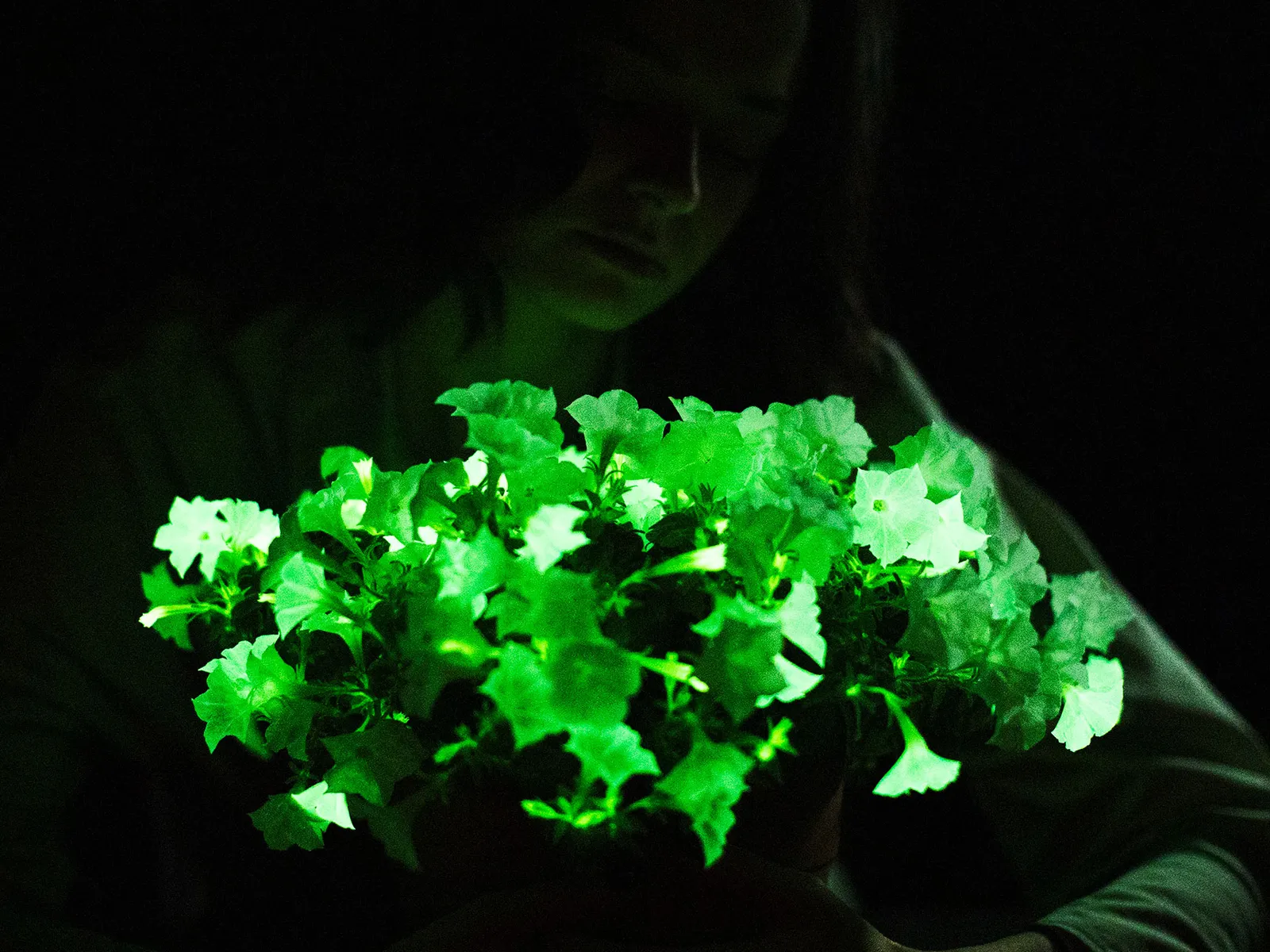From “GMO is Evil” to “GMO is Cute”: The Glow-in-the-Dark Firefly Petunia
For decades, the term “GMO” has sparked controversy. Genetically modified organisms were often seen as dangerous and unnatural. But today, that narrative is changing. The launch of the Glow-in-the-Dark Firefly Petunia—a plant that glows softly at night thanks to DNA from a bioluminescent mushroom—shows how GMOs are being reimagined as delightful and magical. How did we get here? And what does this say about the future of genetic engineering?
The Early Days of GMO Controversy
In the 1990s and early 2000s, GMOs entered public awareness amid suspicion. The first GMO products, like herbicide-resistant soybeans and pest-resistant corn, were seen as unnatural. People worried about health risks, environmental damage, and the ethics of altering nature.
Media amplified these fears. Documentaries like “Food, Inc.” and books like “The Monsanto Papers” painted GMOs as tools of corporate greed, harming small farmers and biodiversity.
As a result, many rejected GMOs, and anti-GMO movements grew strong. Europe enacted strict regulations, and debates in the U.S. focused on labeling laws. The message was clear: GMOs were something to fear.
A Shift in Perception
Today, public opinion on GMOs is softening. Several factors have contributed to this change:
- Science Clears the Air: Research shows GMO foods are as safe as conventional ones. Studies have also highlighted their benefits, like drought-resistant crops and Vitamin A-enriched Golden Rice.
- Better Communication: Biotech companies now engage directly with the public. They’re more transparent and focus on creating products that resonate with individual consumers.
- New Consumer Products: GMOs like the Arctic apple (which resists browning) and the Innate potato (which avoids bruising) feel personal and relatable, changing how people view genetic engineering.
But nothing has captured imaginations quite like the Glow-in-the-Dark Firefly Petunia.
Meet the Firefly Petunia
The Firefly Petunia is a marvel of biotechnology. Scientists used CRISPR to add a gene from the glowing mushroom Mycena chlorophos to a petunia’s DNA. The result? A plant that emits a soft glow at night, resembling fireflies.
This plant is more than a scientific achievement. It’s a cultural milestone. Unlike earlier GMOs designed for farming, the Firefly Petunia exists purely to bring joy. It’s perfect for gardens, social media posts, or as a unique conversation piece. Videos of #GlowPetunia have gone viral, showing its enchanting glow.
Why It Feels Different
The Firefly Petunia has helped change how people think about GMOs because:
- It’s Fun and Magical: A glowing flower sparks wonder and joy, not fear.
- It’s Personal: This is a GMO you can grow at home. It’s not about global problems; it’s about enhancing your life.
- It’s Intriguing: The use of mushroom DNA is fascinating, not scary. It feels like a playful experiment rather than a corporate scheme.
- It’s Eco-Friendly: The plant’s glow can reduce the need for outdoor lights, saving energy and cutting light pollution.
What This Means for the Future
The Firefly Petunia is more than a cute novelty; it’s a glimpse into the future of GMOs. Here’s what it teaches us:
- Connect with Consumers: GMOs that feel personal and relatable are easier to accept. The Firefly Petunia invites people to interact with biotechnology in a positive way.
- Make It Beautiful: People love beauty and novelty. GMOs that enhance aesthetics—like glowing flowers—are likely to win more hearts.
- Be Transparent: Clear communication about how a GMO is made builds trust. The creators of the Firefly Petunia explained the process openly, easing fears.
- Focus on Joy: Not all GMOs need to solve global problems. Sometimes, creating something that brings happiness is enough to shift perceptions.
Challenges Ahead
Not everyone is convinced. Critics say fun GMOs like the Firefly Petunia distract from serious ethical and ecological concerns. Others argue that focusing on novelties could undermine efforts to address pressing global issues, like food security. And some people still distrust GMOs, no matter how charming they seem.
Still, the Firefly Petunia is a sign of change. It shows GMOs can be magical and approachable, not just industrial or corporate. By bringing joy to people’s lives, it’s changing the conversation about biotechnology.
The Road Ahead
As glowing Firefly Petunias light up gardens worldwide, it’s clear that GMOs are being reimagined. What’s next? Roses that change color during the day? Vegetables that grow in fun shapes?
The future of GMOs is bright, just like the Firefly Petunia. It’s a reminder that genetic engineering isn’t just about solving problems—it can also spark joy.
